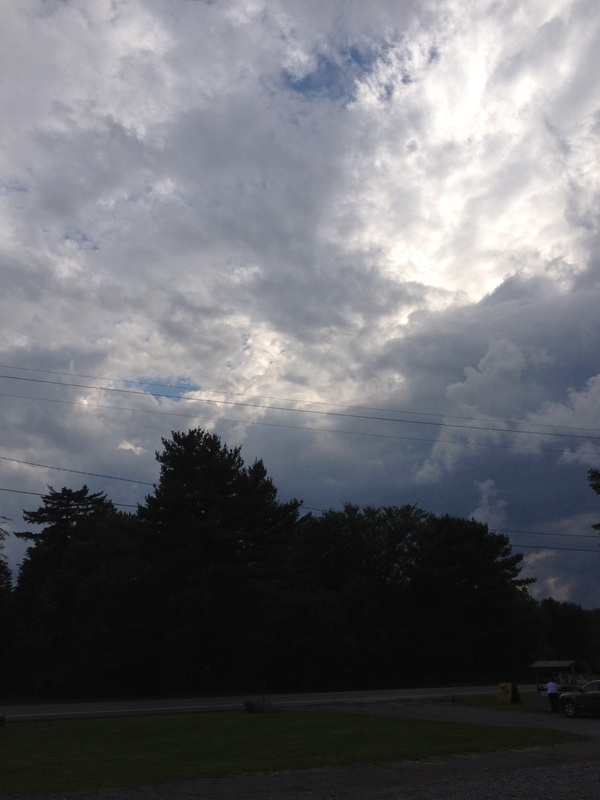|
Doctor, I think I’ve had a breakthrough.
I’ve actually taken two summer vacations of nearly a week long. I’ve always been busy in the summer, working overseas at major events or schlepping off to the inane din of ball parks. My wife used to say, why don’t you be smart like Dave Anderson and take a whole month off and relax? (For that matter, editors and readers always asked why I couldn’t be more like Dave Anderson.) Anyway, I thought I’d try it. The first vacation to Cape Cod was a little scary because I kept getting reports of marauding sharks and infectious sea lions and wandering bears and skittish foxes. The second vacation began in western Massachusetts, where I did things like swim in a lake and watch ducks and kayakers glide past, and hang out with friends in a delightful home. Sometimes we watched the clouds and the sky and the hills. Sometimes we talked about the Yankees or politics or thwarted hoop dreams. Then my wife and I drove to central New York to visit my kid brother and his wife who are on the faculty at Colgate and live out in the country in an 1842 stone house. While the women went to an all-day antique fair in town, my brother and I picked vegetables in his garden and watched the farmer’s cows on the other side of the fence. But the highlight of upstate was having time for two trips to Cooperstown, for the Glimmerglass Festival – a total revelation. I had always thought of it as an outdoor summery diversion, but in fact it is an indoor auditorium used only a few months a year with a very high level of performance and staging. We sat in the third row for an old French opera, Armide, with a strong cast including a charming ballet corps, and on Monday we came back for Lost in the Stars, the pre-Mandela South African story of a tragedy striking black and white families. From the third row, we were especially captivated by the bass, Eric Owens, and the tenor, Sean Panikker, two Pennsylvanians on their way up. After the performance, the principals came out in street clothes and answered questions from the audience. Afterward, the four of us went out for home-made ice cream and zucchini bread on Route 20, and talked about making this excursion to Glimmerglass an annual event. Then my wife and I drove back toward the city under a gathering storm, seeing more sky than we ever can around New York. I know I am not saying anything profound here, Doctor, but I think I have proven the point that I can take a week away from cities, from work, and not go nuts. Of course, now I am back in high gear – drawn back by the Lance Armstrong saga, getting ready for a few cameo gigs at the Open tennis in the next two weeks. Deadlines. Assignments. Anxiety. The dreaded R-word is taking its own well-deserved vacation. Still, this is progress, isn’t it, Doctor?
Roy Edelsack
8/26/2012 06:02:36 am
GV- I'm hoping that part of your Open reporting this year will be to view it as a civilian rather than from the press box. I've attended at least one session of the US Championships/US Open every year since 1959 and have found there is a whole fan experience from the "cheap seats" that doesn't get covered. I'm thinking of the mad dash for shaded seats in the Grandstand; the unfairness of the "if you go to the bathroom you might not be let back in policy; the ridiculous scheduling that puts mismatches in an empty Ashe while the most competitive matches are overcrowded around the rest of the grounds; high tension in the food court over "saved" tables, and (my wife insists I include this) the surly, inefficient staff at the Ben and Jerry's stand.
George Vecsey
8/26/2012 06:13:51 am
Nice to hear from you. I have a modest proposal (Grandstand prominent) in the Monday tennis section of the NYT, I think.
Andy Tansey
8/27/2012 04:46:07 am
Mr. Vecsey, so how does all of this tie together? Okay, I'll try.
George Vecsey
8/27/2012 09:51:12 am
You can take the boy out of Briarwood, etc. My kid brother (not the Molloy brother) went to HS in Queens and college in Manhattan, and now he has a vegetable garden larger than our front yard growing up in Hollis. I get the shakes if I am too far from the Vietnamese place in Bayside or the Xi'an lamb bun in Flushing. Then again, my kid brother has a lovely French restaurant in a small town near him. Enjoy beautiful western Mass. GV 8/30/2012 09:54:04 am
George
George Vecsey
8/31/2012 06:12:30 am
I just had this flashback, decades back. we borrowed a friend's ski house near Otis Ridge, Mass. Great times. We went back in April and I promised to dig up our friend's garden. Got eaten by black flies. Before I could wise up, I had 50 bites. Springtime for Black Flies. Still a lovely part of the world. GV 9/4/2012 10:48:30 am
George Comments are closed.
|
Categories
All
|











